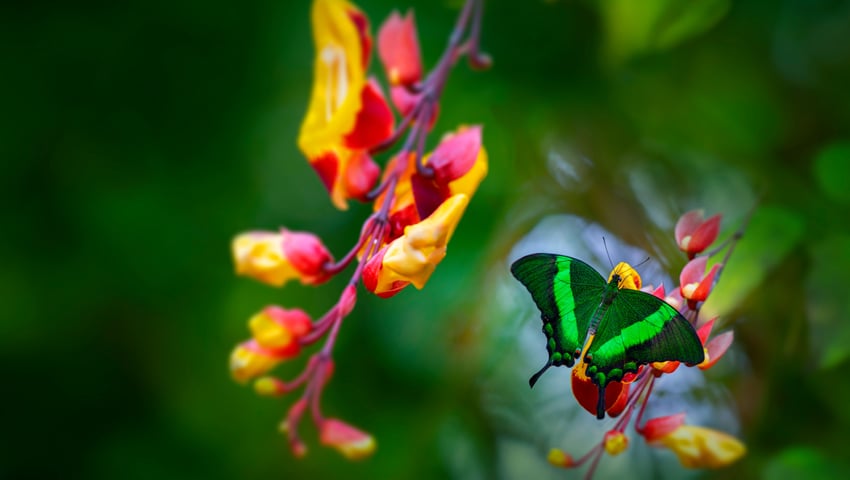A new report has underlined the case for green investment, demonstrating how a global push to meet nature-related sustainability goals over the next six years could deliver more than 20 times the return on investment.
The report, Closing the Gap: Investing in Natural Capital to meet the Sustainable Development Goals, explores how much 40 strategically chosen countries need to invest to meet key UN Sustainable Development Goals (SDGs) linked to nature conservation and restoration, more efficient use of natural resources, and the reduction of water and air pollution. It then analyses the resulting return on investment in terms of benefits for nature and human wellbeing, calculated as an economic equivalent.
It estimates USD7.4 trillion would need to be invested between now and 2030 to meet nine key nature-related SDG targets. Closing the natural capital gap would generate the economic equivalent of USD152 trillion, or USD20 for every dollar spent.
Investing to meet nature-related targets would:
- Avoid nearly 4.5 million premature deaths every year between now and 2030
- Avoid more than 27 million hectares of deforestation over the same period
- Reduce natural resource extraction by nearly 18 billion tonnes
- Restore more than 250 million hectares of agricultural land
- Increase terrestrial protected areas by 396,000 hectares and marine protected areas by 218,000 hectares
The study was commissioned by the Green Growth Knowledge Partnership (GGKP) – an initiative dedicated to the transition to a green economy, led by major economic and development organisations and UN agencies – and authored by biodiversity economists at the UN Environment Programme World Conservation Monitoring Centre (UNEP-WCMC). It builds on a series of detailed GGKP economic reports assessing the gap that exists between the Earth’s remaining natural resources and environmental conditions – termed “natural capital” – and what experts calculate is needed to meet selected nature-related SDGs.
The 40 countries included in today’s report were chosen to ensure coverage across different geographical regions and World Bank income classifications and because of their combined population, economic income, land and coastal coverage, emissions output. In total, they represent 80 per cent of world GDP, 78 per cent of the global human population, 78 per cent of arable land and 81 per cent of greenhouse gas emissions.
The gap between current natural capital stocks and what is needed, as well as resulting investment outcomes, varies from country-to-country. However, the report does show that action on two particular priorities – safeguarding important ecosystems and tackling air pollution – would result in high benefits everywhere.
Protecting and restoring ecosystems emerges as a top-three investment priority in every region around the world. Combined action here would close the “natural capital gap” by 34 per cent. The highest returns on investment in most countries come from protecting and maintaining natural ecosystems (32 out of 40 countries) and restoring degraded agricultural land (seven out of 40 countries).
On pollution and consumption, the study found that the USA, India and China stand to gain the most in this category if they all act on air pollution, cutting greenhouse gas emissions and reducing and improving their use of natural materials.
It also underlines how investment in nature would disproportionately provide a crucial boost to low and lower-middle income countries. Seven out of the 10 countries with most to gain from closing the natural capital gap are in Sub-Saharan Africa, with the greatest benefits connected to investment in water and sanitation, ecosystems and agricultural land remediation.
The report emphasises ongoing research and consensus on the failure to safeguard and invest in nature, highlighting stark conclusions from the Dasgupta Review of the Economics of Biodiversity and the World Economic Forum’s Global Risk Reports. It sets out urgent actions for governments and businesses, in line with other relevant frameworks and targets, such as the SDG Cooperation Framework and the Global Biodiversity Framework, also now known as the Biodiversity Plan.
Key actions stressed by the researchers include: ending environmentally harmful subsidies and incentives, boosting protected areas and the implementation of nature-based solutions and a global effort to move “beyond GDP” as a measurement of determining holistic returns.
James Vause, Report Author and Lead Economist at UNEP-WCMC, said, “The world is facing immense economic, climate and geopolitical challenges, on top of the long-term impacts of the Covid-19 pandemic, and crises that have followed. It is no surprise we are behind on Sustainable Development Goals for nature and other priorities. However, our report shows just how much there is to gain if we collectively invest in nature.
“We cannot continue to think in terms of trade-offs between economic progress and efforts to tackle pollution and the destruction and degradation of nature. Delivering the Sustainable Development Goals means finding development pathways that restore and enhance, rather than further degrade, natural assets. The action agenda set out to help deliver this is a challenging one, but the benefits of doing so for people and the economy, as well as the planet are likely to be huge.”
Adriana Zacarias Farah, Officer in Charge at GGKP, said, “Too often investing in nature is seen as a ‘nice-to-have’, something to be done once all other needs are met. Yet, human well-being is dependent on nature. Without a healthy, thriving environment, there is no way to achieve our sustainable development goals.
“As this report demonstrates, closing the gap between our current stock of natural capital and what is needed to meet the UN Sustainable Development Goals is not only a good economic investment but has enormous benefits for people and the environment. Investing in nature helps us address each pillar of the triple planetary crisis, and choosing not to will set us back on achieving the future we want.”
